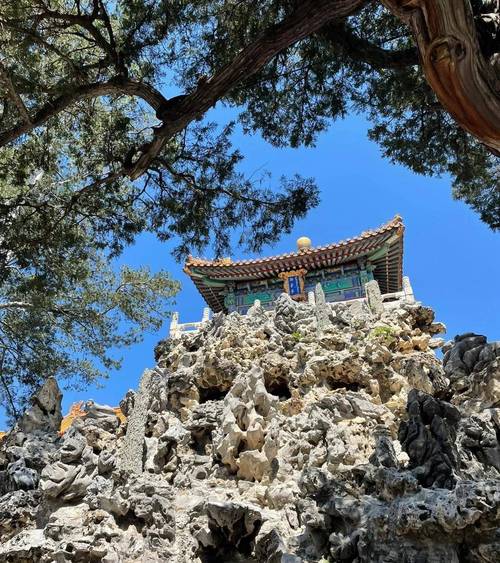
Religious Rituals in the Imperial Garden
A Confluence of Power and Piety
The Imperial Garden, a sanctuary of tranquility amidst the sprawling palace complex, was not merely a space for leisurely strolls and aesthetic appreciation. It served as a significant stage for religious rituals, reflecting the deep intertwining of political power and spiritual devotion in imperial China. These meticulously choreographed ceremonies, conducted amidst the garden's cultivated beauty, were integral to maintaining cosmic harmony, ensuring dynastic prosperity, and legitimizing the emperor's divine mandate.
The Sacred Landscape
The very design of the Imperial Garden was imbued with cosmological significance. The arrangement of pavilions, bridges, and rockeries often mirrored mythical landscapes or reflected auspicious numerical symbolism. Lakes and ponds symbolized the cosmic ocean, while artificial hills represented mountains, believed to be the abode of immortals. This deliberate emulation of the universe transformed the garden into a microcosm of the cosmos, a sacred space where heaven and earth converged.
Seasonal Observances
The rhythm of the agricultural calendar dictated many rituals performed within the garden. Spring equinox celebrations saw the emperor and his entourage proceed through the blossoming landscape, offering prayers for a bountiful harvest. During the Mid-Autumn Festival, the garden was bathed in the ethereal glow of lanterns, symbolizing unity and wholeness under the full moon. These ceremonies reinforced the emperor's role as mediator between the celestial realm and his people, ensuring the empire's continued prosperity.
Ancestral Veneration
Ancestral veneration, a cornerstone of Chinese belief, held a prominent place in the garden's ritual life. Elaborate ceremonies were conducted at designated ancestral halls or temples within the garden, honoring the spirits of deceased emperors and empresses. Incense offerings, ceremonial dances, and the reading of eulogies were performed to appease the ancestors and seek their blessings for the reigning dynasty. These rituals underscored the emperor's filial piety and his rightful inheritance of the mandate to rule.
Imperial Processions and Prayers
The Imperial Garden was frequently graced by processions led by the emperor and his consort, who, adorned in elaborate robes, would visit specific shrines or sacred trees within the garden to offer prayers. These processions, often accompanied by musicians and court officials, were a visual spectacle that reinforced the emperor's authority and his role as the intermediary between the celestial and earthly realms.
The Power of Symbolism
Every element within these rituals, from the color of the emperor's robes to the type of incense burned, carried symbolic weight. Dragons, symbols of imperial power, adorned the architecture and were often incorporated into the ceremonies through dance and costume. The burning of specific incense, such as sandalwood or agarwood, was believed to carry prayers to the heavens and purify the surroundings.
Conclusion
The religious rituals conducted within the confines of the Imperial Garden were far more than mere ceremonial displays. They were a potent fusion of political authority and spiritual devotion, meticulously orchestrated to legitimize imperial rule, ensure cosmic harmony, and maintain the delicate balance between heaven and earth. These ceremonies offer a fascinating glimpse into the complex interplay of power, belief, and symbolism that characterized imperial China.
Questions for Reflection
- How did the physical layout of the Imperial Garden contribute to its religious significance?
- What were some of the key aims and motivations behind conducting religious rituals in the Imperial Garden?
- In what ways did these rituals reflect and reinforce the emperor's role and responsibilities within Chinese society?
note: This return of all, without the author's permission, may not be reproduced